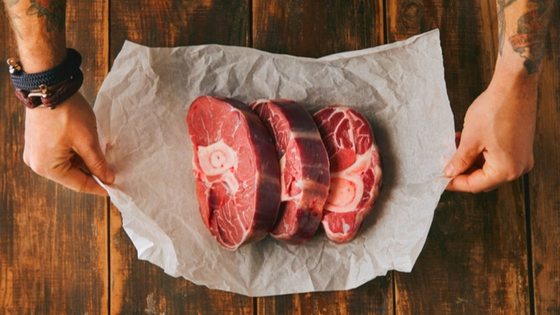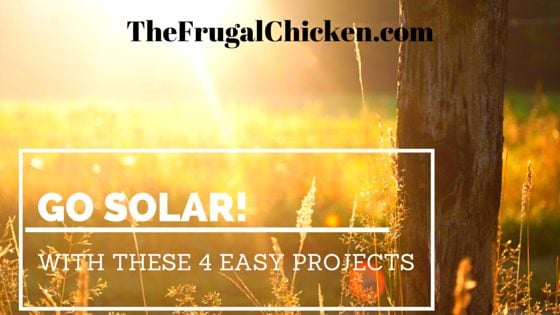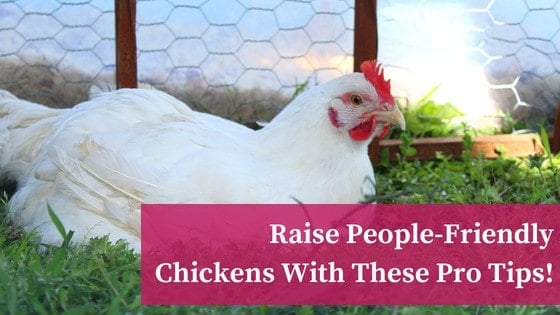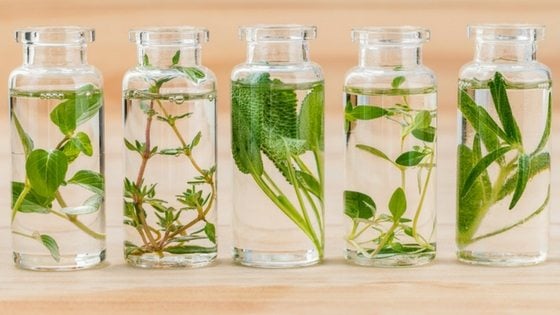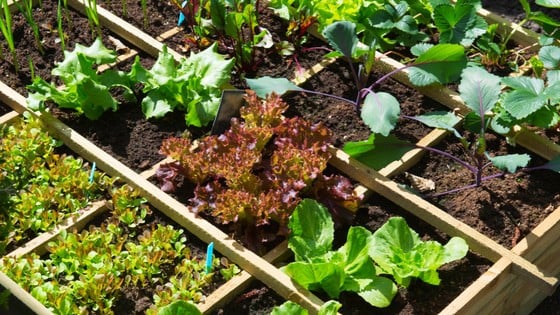Growing your own vegetables is one of the most enjoyable endeavors you can attempt. Not only will you be rewarded with a delicious bounty of nutritious vegetables at the end of the growing season, but you will also save some money, too.
However, if you have a short growing season or lack ample gardening space – for example, if you live in an apartment – you might think that this is not something you can easily do. You’re in luck. There are plenty of veggies that can easily be grown in containers with minimal expertise and know-how. It’s simply a matter of knowing the best vegetables to grow in pots, along with implementing some helpful tips.
Table of Contents (Quickly Jump To Information)
Leafy Greens
Spinach
Spinach is not only great for you, but it’s one of the best vegetables to grow in pots. A cold-hardy plant, you can keep spinach in containers outside well into the autumn months. You might, however, want to mulch it or bring it inside during the hottest days of summer to protect it from being scorched.
Collard Greens
Collard greens thrive in containers – just as long as you put the container in full sunlight during the day. These greens need at least six hours of sunlight during the fall and spring months but prefer a little bit of shade during the hot afternoon hours of summer.
Kale
Spinach isn’t the only leafy green to consider if you want to grow vegetables in pots! You should also give kale a try. The perfect plant for container gardening, it requires minimal space. You can grow five kale plants in just a 20-inch pot. A cold-tolerant plant, you should be able to keep your kale plants outside in containers much of the year.
Lettuce
One of the easiest vegetables to grow in a pot, lettuce requires minimal upkeep. Just plant your seeds in a container on the patio and begin harvesting in just a few weeks. Another benefit of lettuce is that it can tolerate the shade and the sunlight, so you can move it around to wherever it’s most convenient for you. Just be careful about giving it too much heat!
Root Vegetables
Radishes
Because radishes are so small, they do quite well when planted in containers. As long as you select a short variety, you can grow radishes in just about any kind of container. Longer ones will need to be planted in taller containers.
Carrots
Carrots, along with almost every other root crop, can easily be grown in containers. When sown thinly and cared for properly, carrots can be grown in containers exactly as they would be if you grew them directly in the garden.
Potatoes
Many people don’t know this, but potatoes grow shockingly well in containers. You can grow potatoes year-round in a container, in fact- you’ll never have to buy them again! Just make sure you put some holes in the bottom of your container for aeration. You’ll yield a pound or two of potatoes each growing season per container.
Beets
Beets can easily be grown in pots, too. Since beets grow quickly and require no transplanting, you can grow them quickly in a container as long as it’s big enough. Sow your seeds thinly, and keep in mind that you might have to thin again later, too.
Onions
You can even grow onions in containers! As long as you have plenty of space – a planter that is more than five inches deep is ideal – you should be able to fit several onion sets in a container. You can harvest the tops, too.
Parsnips
The parsnip is an acquired taste – as a result, it can be tough to find parsnips in stores out of season. Luckily, you can easily grow parsnips in containers. You will want a deep container since they can get quite long. Make sure you cut holes for drainage, too.
Turnips
Turnips do quite well in containers. You will need a pot that is at least eight inches deep to provide for adequate root growth, and you will also need a pot with excellent drainage. Turnips are highly susceptible to overwatering.
Everyone’s Favorite Garden Vegetables
Zucchini and Summer Squash
Zucchini is not only one of the easiest vegetables to grow, but it’s also one of the best vegetables to grow in pots. As with all summer squash, zucchini can grow just about anywhere you plant it. Choose a large pot for best results. You will want to harvest your plants regularly so they don’t become overweight with fruits – plus, this will keep production up as the plants won’t be putting unnecessary energy into growing monstrous, woody fruits.
Peppers
Certain types of peppers do exceptionally when in containers. From bell peppers to hot peppers, you can grow just about any kind of these heat-loving varieties in pots. Provide plenty of room for your peppers to grow – a ten-gallon container may be necessary for some varieties. These plants also need lots of sunlight each day (at least eight hours).
Cucumbers
Like zucchini, cucumbers grow quite well in containers. You can grow them indoors or outdoors as long as you have a trellis to support them and to maximize the available space. The best varieties for growing cucumbers in pots are midget pickles and Spacemasters.
Beans
You can grow either pole or bush beans in pots. Pole beans do well if you have some sort of trellis or pole for the vines to travel up, while bush beans grow in a squatter, more uniform pattern. Regardless of the type you choose, try to use at least a twelve-inch container.
Peas
All types of peas, including snow peas and sugar snap peas, can be grown in containers. They taste great in stir-fries or when sauteed. Plus, since the plants are small, they are easily grown in pots. As with pole beans, you will need to provide some kind of trellis system. They thrive in the cool conditions of early spring.
Tomatoes
A classic container plant is the tomato plant. Many people grow tomatoes in pots so that they can be brought in out of the cold to enjoy the warmer temperature inside your house. Make sure you stake your plants to avoid breakage!
Unusual Container Veggies
Asparagus
Asparagus can be grown in a pot, too. It’s a hardy plant and is perennial, meaning it will come back in later years. When properly cared for, asparagus can live for years. Make sure you have a large plant that is relatively shallow – it just needs to have a broad diameter.
Cauliflower and Broccoli
Cauliflower, broccoli, and other cole crops (like cabbage) are perfect candidates for growing in pots. Not only are they cold-tolerant and easy to grow, but these plants can thrive when planted in pots at least eight inches deep.
Eggplant
As long as you have your pots in a warm, sunny enough location, even eggplant can be grown in them. You will want to avoid overcrowding since eggplant tends to sprawl. Choose a pot that is at least five inches deep. Clay pots are good choices for eggplant since they allow lots of heat to permeate into the soil.
Artichokes
Let’s face it – for most people, artichokes are super difficult to grow. But if you enjoy the taste of artichokes, you may feel repulsed by the high prices charged at the grocery store. Instead of shelling out all your hard-earned cash, why not try growing artichokes in pots? They’re low maintenance and best planted in fall since they take a long time to germinate.
Tips for Growing Vegetables in Pots
If you’re ready to start growing some of the best vegetables in pots, consider some of these helpful tips to get you started.
Consider Your Container Type and Size
Not sure what kind of container you should use? Don’t worry. Usually, any kind of container will do. However, there are some stipulations to this. Some plants – like eggplant – require wide containers in order to spread their roots. Others, including root crops such as carrots and turnips, need deeper pots so that they can form long tubers. Make sure you research your plant type before selecting your container.
You will want to pay attention to the watering needs of your plants, too. Clay pots usually need more water than plastic or wooden ones, since the porous terracotta will absorb heat and drain water more quickly. Think about the color, too – dark-colored containers will stay warmer than light ones. Always avoid containers made out of treated wood, as it contains chemicals that can be absorbed by your vegetables.
Use the Best Soil
Vegetables don’t usually care about the type of pot they are in, but they do care about the soil. Make sure you add plenty of organic matter or choose a balanced organic potting mix. Make sure the soil is not too light but also not too heavy – you can often balance out the structure of your soil by adding materials like potting soil, peat moss, vermiculite, sand, or perlite, depending on your specific needs.
Mulch and Fertilize Regularly
Fertilizing is important when it comes to growing in pots. Since the plants aren’t being grown directly in the ground, they don’t have access to all the “good stuff” that they normally would be able to access. We’re not just talking about your basic nitrogen and phosphorous, either. Plants also need micronutrients, like calcium and magnesium, in order to thrive. Only a balanced fertilizer can provide this. An organic option, like compost, is best. Not only will it introduce the nutrients your plants need, but it will also provide the soil with beneficial microorganisms, too.
Bring Indoors if Needed
Not all plants can thrive outdoors 365 days out of the year. Consider the climate of your growing zone and how it relates to the growing needs of your plants. Frost-sensitive plants, like peppers and tomatoes, can be brought indoors when the temperature dips, while heat-sensitive vegetables like lettuce should be brought inside during the dog days of summer.
What Are the Advantages of Growing Vegetables in Pots?
There are countless benefits to growing vegetables in containers. Not only does this practice allow you to cultivate plants that you might not easily be able to find at the supermarket (or find without paying a pretty penny) but it’s also exceptionally easy. Container-grown vegetables often retain moisture and tolerate weather fluctuations more easily than those grown in the ground. Plus, since you don’t need to wait for the ground to warm up, you can start a container garden in the spring. A vegetable grown in a pot is also less likely to suffer from weeds, diseases, and insect pests.
So what are you waiting for? Select some pots, select some plants, and start planting today.
Maat van Uitert is a backyard chicken and sustainable living expert. She is also the author of Chickens: Naturally Raising A Sustainable Flock, which was a best seller in it’s Amazon category. Maat has been featured on NBC, CBS, AOL Finance, Community Chickens, the Huffington Post, Chickens magazine, Backyard Poultry, and Countryside Magazine. She lives on her farm in Southeast Missouri with her husband, two children, and about a million chickens and ducks. You can follow Maat on Facebook here and Instagram here.

